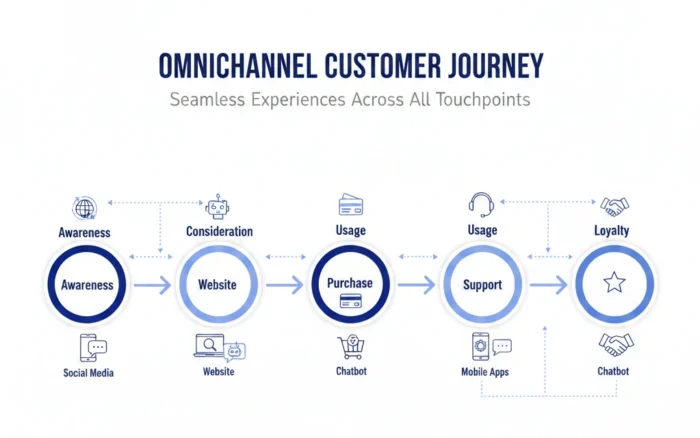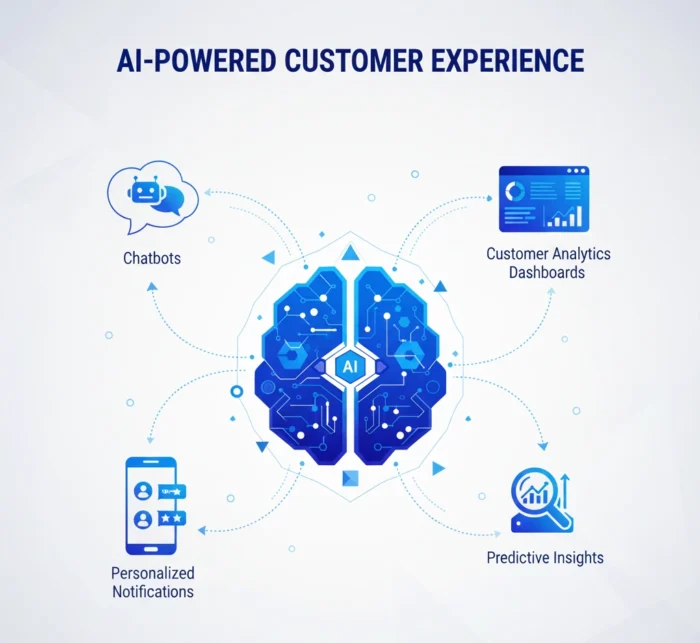Putting the Customer at the Heart of Digital Transformation: How to Elevate Experience in the Digital Age
Introduction
In today’s business landscape, where digital channels multiply and customer expectations evolve at lightning speed, the question is no longer “should we transform?” but “how fast and how smart can we?” For organisations seeking to stand out, the game-changer lies in the intersection of two powerful forces: digital transformation and customer experience (CX).
At PureSoftware, our Digital Services practice recognises that customer experience is not merely a support function, it’s a strategic lever. We believe that by weaving together omnichannel touchpoints, data-driven insights, automation and personalised journeys, companies can not only meet but exceed customer expectations.
Why Customer Experience in Digital Transformation Matters
- The term “digital transformation” refers to integrating digital technologies across all areas of business, fundamentally changing how organisations operate and deliver value to customers.
- Meanwhile, customer experience is defined as all the interactions a customer has with a brand across pre-purchase, purchase and post-purchase phases including emotional, sensory and behavioural responses.
- When digital transformation is done without placing the customer at the centre, it risks being a tech-upgrade project that fails to deliver meaningful business value.
- On the flip side, brands that leverage digital transformation to enhance CX gain real competitive advantage: deeper engagement, higher loyalty and better growth.
In short: digital transformation + customer experience = design of future-proof business.
Key components of a digitally transformed customer experience
Here are some of the major pillar’s organisations must focus on:
1. Omnichannel, seamless touchpoints
Today’s customer interacts via a mix of mobile, web, in-store, chat, social, voice. A digitally transformed CX strategy brings all these together into a consistent experience.

2. Data, insights & persona-driven personalisation
By aggregating customer data (behavioural, transactional, sentiment) you gain a 360° view of each customer and can deliver tailored experiences.
3. Automation + AI-driven engagement
Chatbots, virtual assistants, predictive analytics, real-time decisioning: these aren’t just buzzwords—they are enabling responsive, relevant experiences.

4. Journey mapping and experience orchestration
It’s critical to map the customer journey end-to-end (acquisition → onboarding → usage → support → loyalty) and identify friction points where digital can add value.
5. Continuous measurement & feedback loops
Capability to monitor real-time feedback, KPIs (e.g., NPS, CSAT, churn, first-call resolution) and utilise insights to optimise the experience continuously.
How PureSoftware helps elevate CX in your digital transformation journey
At PureSoftware, our “Customer Experience” service is built with the above paradigm in mind. We partner with clients to deliver:
- Omnichannel architecture: Enabling seamless brand experiences across digital and physical touchpoints.
- Intelligent automation & conversational platforms: Deploying chatbots, virtual assistants and AI-powered dialogues to enhance responsiveness and efficiency.
- Data & analytics-led personalisation: Building unified customer profiles, segmenting intelligently and delivering context-aware experiences.
- Experience re-engineering: Mapping customer journeys, identifying pain points, redesigning processes to be customer-first, not business-first.
- Tech-agnostic delivery across industries: Whether in BFSI, healthcare, retail or telecom, we bring cross-industry best practices into your CX transformation.

Realising the business impact
Transforming CX through digital means isn’t just a feel-good exercise; it drives tangible business outcomes:
- Companies with mature digital CX strategies see higher customer loyalty and are more likely to acquire new customers.
- Smooth, digital-first experiences reduce cost-to-serve (e.g., self-service channels, bots) and improve operational efficiency.
- A standout digital customer experience becomes a differentiator in crowded markets, helping brands cut through noise and create lasting impressions.

Challenges & how to navigate them
Any transformation journey has its bumps. Key challenges include:
- Legacy systems and data silos that prevent unified customer views
- Organisational silos (marketing, IT, operations) that hamper coordinated experience delivery
- Privacy, compliance and security concerns amid greater data usage
- The need for cultural change: a shift to customer-first mindset rather than process/driven mindset
Tips to overcome these:
- Start with journey mapping and stakeholder alignment before major tech investment
- Build cross-functional teams with clear ownership of the customer experience
- Prioritise scalable, modular architecture (not big-bang) so you can iterate quickly
- Embed measurement and continuously refine based on real-time feedback
The path ahead: future trends in digital CX
Looking forward, these themes will shape experience transformation:
- Hyper-personalisation at scale using AI/ML models Sprinklr
- Conversational and voice-based interfaces becoming mainstream
- Immersive experience via AR/VR or mixed reality in certain sectors
- Greater emphasis on ethics, transparency and privacy in experience design
- Predictive and proactive customer engagement (anticipating needs rather than reacting)
Conclusion
Digital transformation is no longer optional, it is essential. But in the rush to adopt new technology, the customer experience must remain the guiding star. When companies place the customer first, redesigning journeys, enabling seamless digital touchpoints, harnessing data and automation, they don’t just keep pace they lead.
At PureSoftware, we believe that building the future means delivering experiences customers remember, moments they value, and journeys that delight. Let’s transform not just how you do business but how your customers feel about you.
Frequently Asked Questions
-
What is customer experience in digital transformation?
Customer experience (CX) in digital transformation refers to how organisations use digital technologies—AI, automation, analytics, and omnichannel platforms—to enhance every interaction a customer has across their journey. It focuses on making experiences seamless, personalised, and consistent. -
Why is customer experience critical for digital transformation success?
Digital transformation succeeds only when it improves how customers discover, engage, purchase, and receive support. A strong CX strategy increases loyalty, reduces churn, improves efficiency, and drives business growth—making it central to any transformation initiative. -
How does AI enhance customer experience?
AI improves CX by enabling:- Personalised recommendations
- Predictive insights
- Automated support through chatbots
- Real-time decision-making
- Sentiment analysis
-
What are the key pillars of a strong digital customer experience strategy?
The foundation of an effective digital CX strategy includes:- Omnichannel experience
- Personalisation
- Automation and AI
- Data and analytics
- Journey mapping and UX redesign
-
How does PureSoftware help enterprises transform their customer experience?
PureSoftware supports CX transformation through:- Omnichannel experience engineering
- AI and automation-led engagement
- Intelligent chatbots and virtual assistants
- Data-driven personalisation
- Customer journey redesign and optimisation

